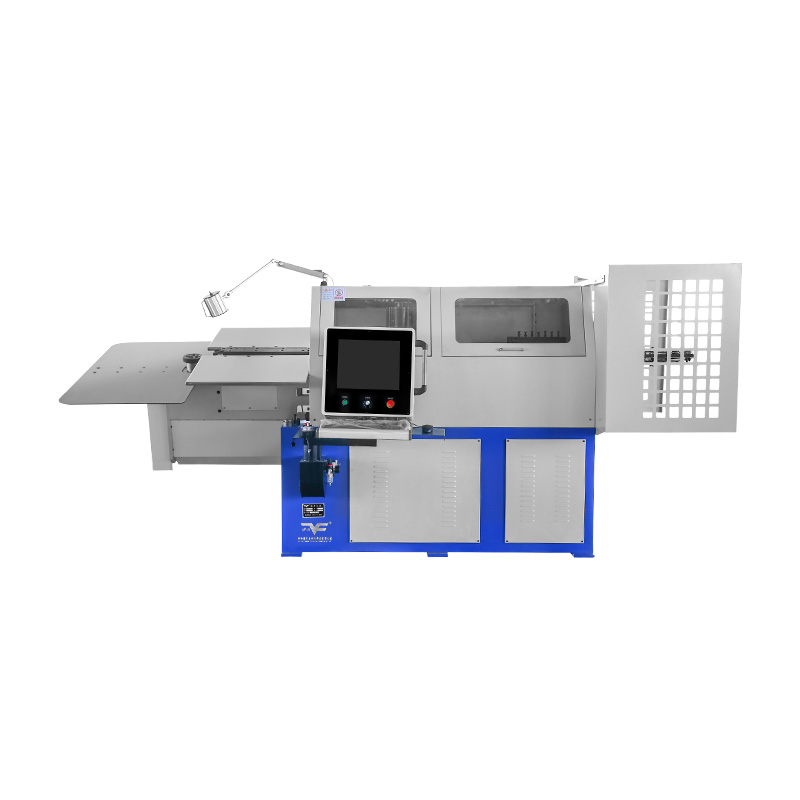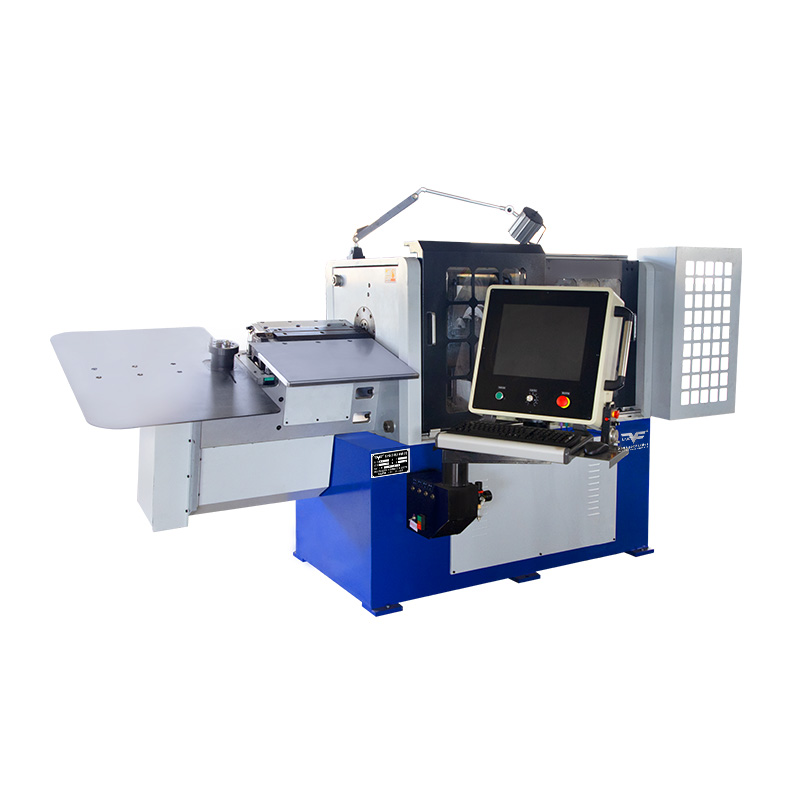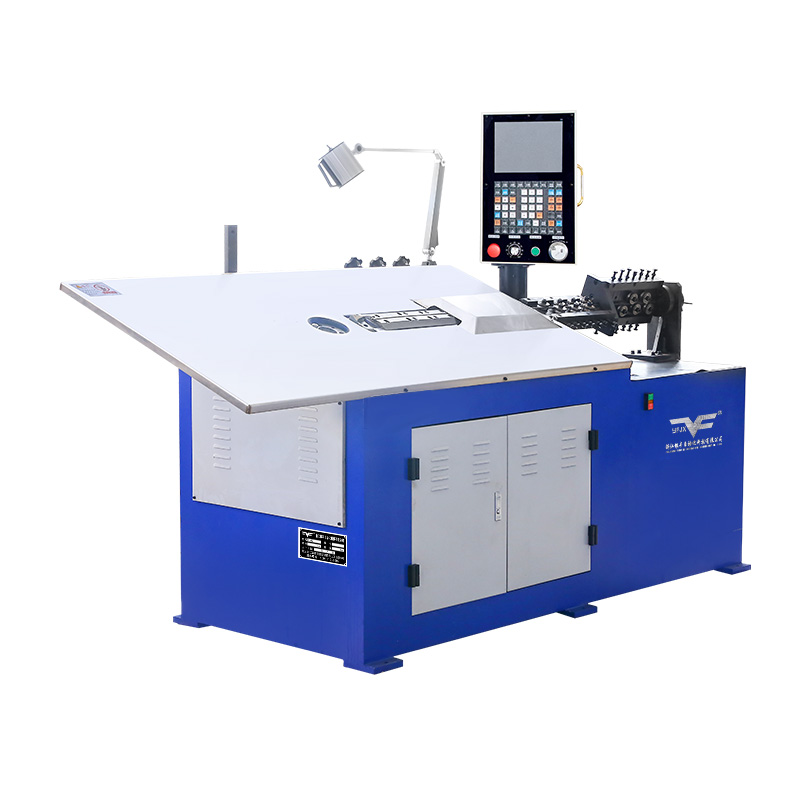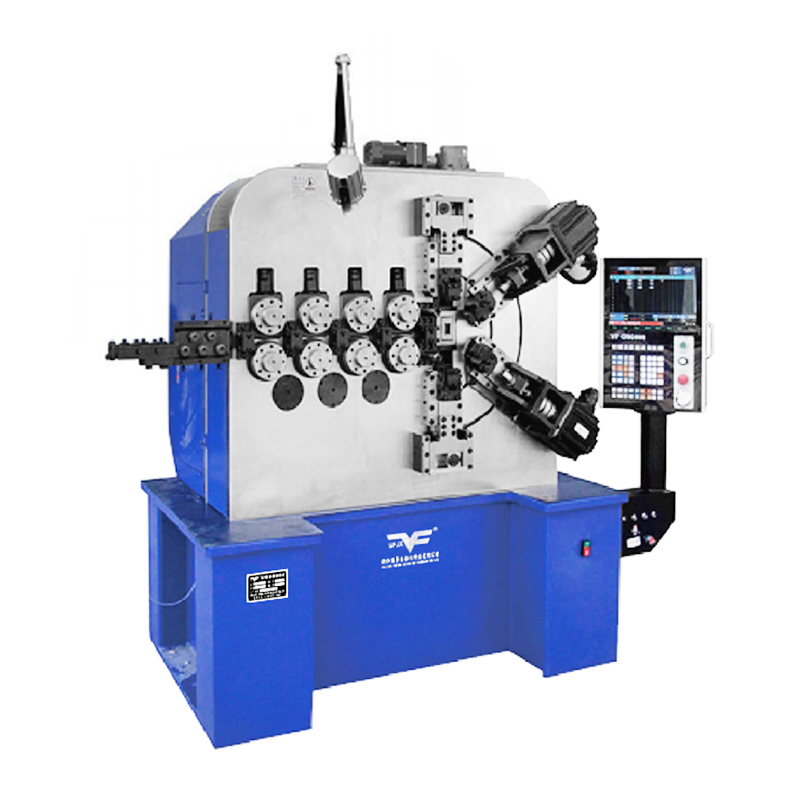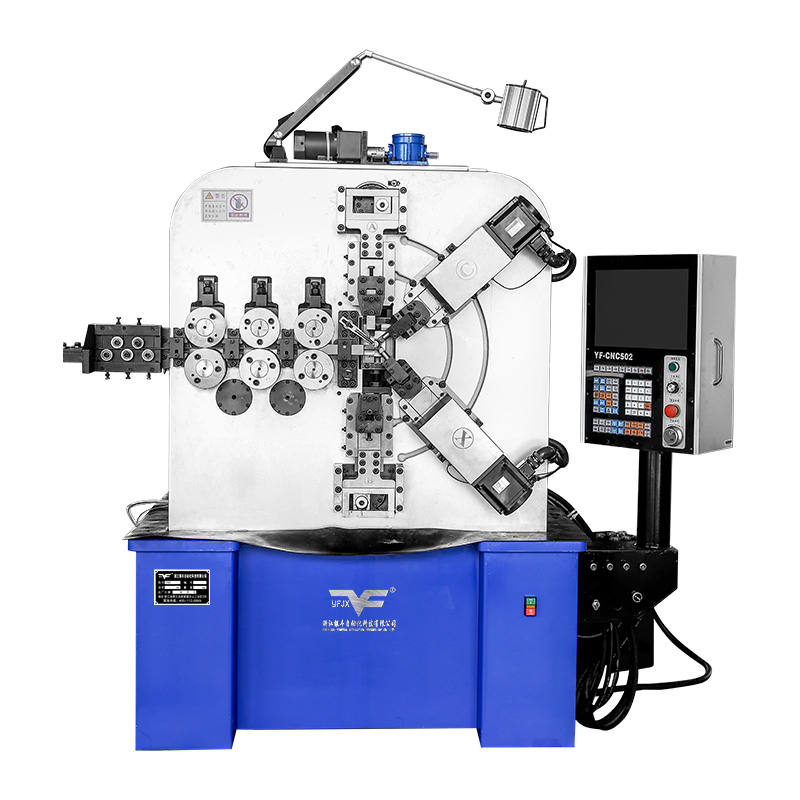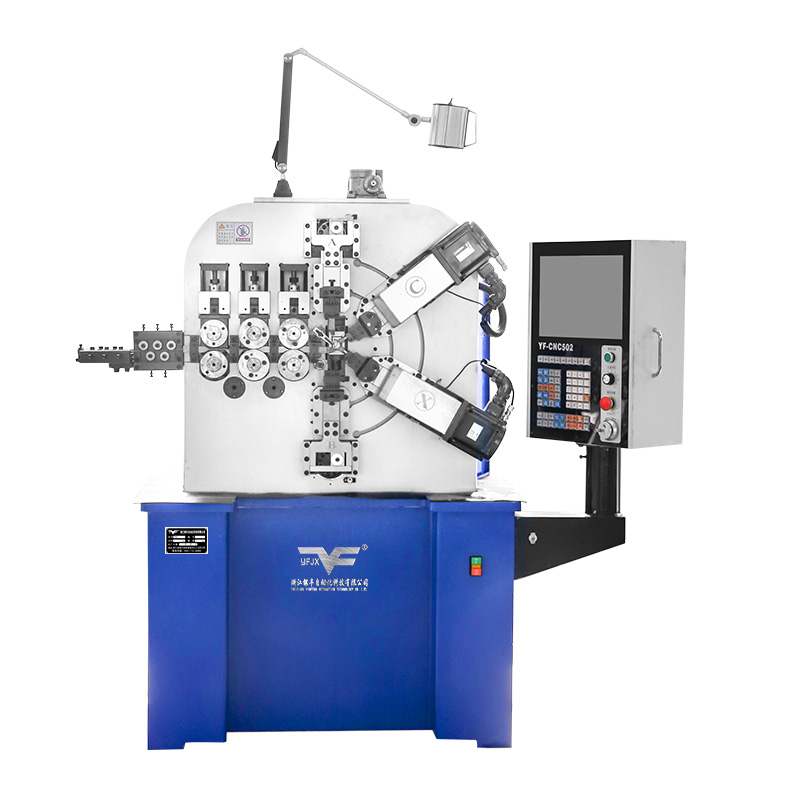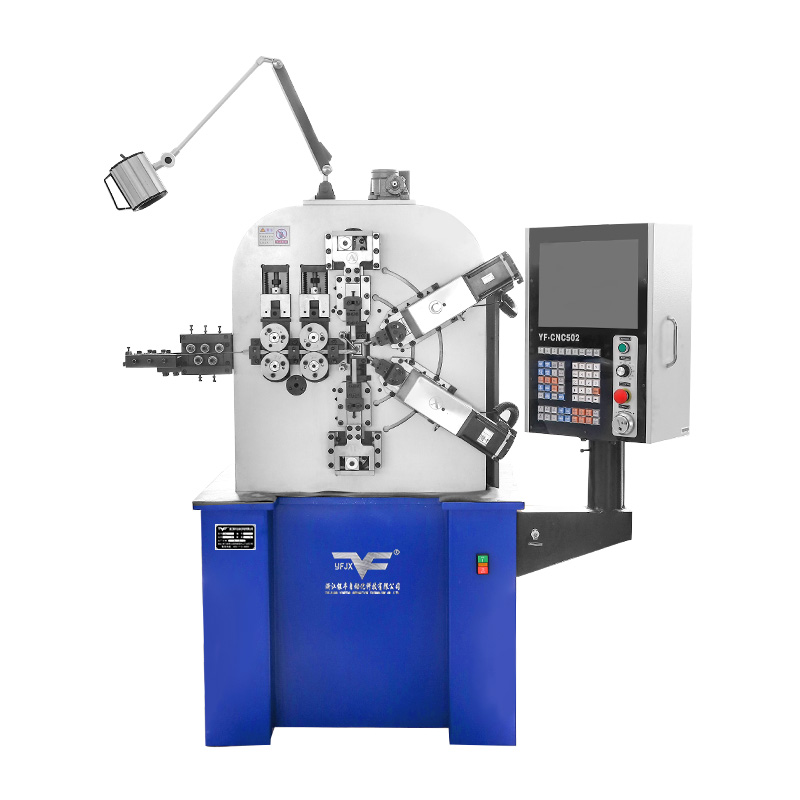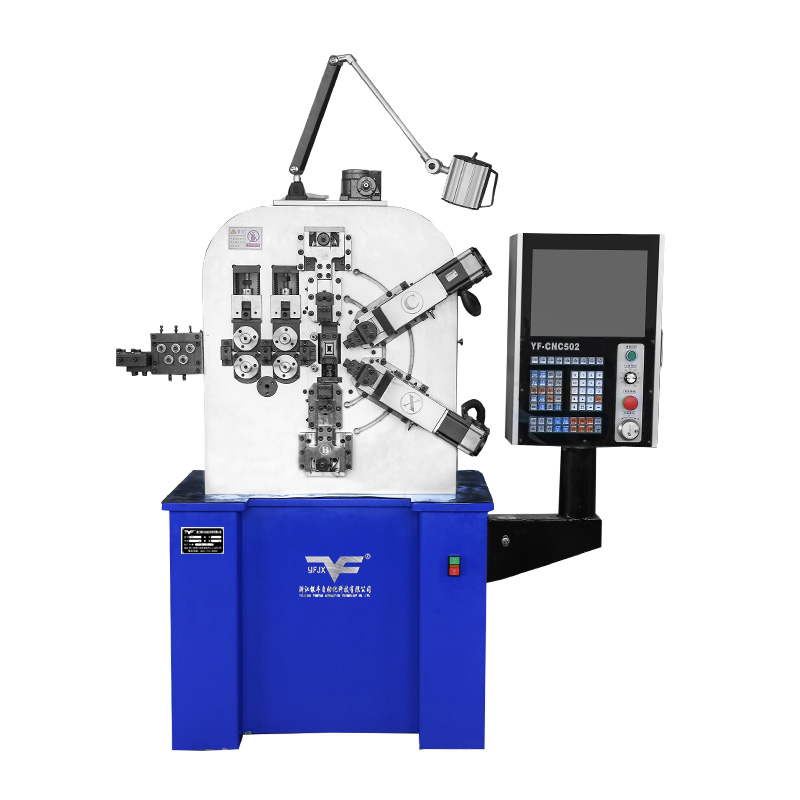How to maintain a spring machine?
Company News-Maintaining a spring machine is crucial for ensuring its longevity and operational efficiency. Proper maintenance helps prevent breakdowns, extend the machine's lifespan, and maintain high production quality.
1. Regular Inspection
Regular inspection is the cornerstone of spring machine maintenance. For both manual spring machines and automated models, frequent checks are necessary to ensure all components function correctly. Examine moving parts, belts, and gears for signs of wear or damage. This proactive approach helps identify potential issues before they escalate into major problems, ensuring smooth operation and avoiding costly repairs. Follow the guidelines provided by your spring machine manufacturer for inspection intervals and procedures.
2. Cleaning
Maintaining cleanliness is essential to prevent the accumulation of dust, debris, and other impurities that can interfere with the machine's operation. Regularly clean the spring machine, including both manual and automated models, to ensure that all parts remain free from contaminants. For manual spring machines, use appropriate cleaning agents and tools to avoid damaging delicate components. In automated systems, ensure that cleaning protocols do not disrupt any electronic or control systems.
3. Lubrication
Proper lubrication is vital for minimizing friction and wear on moving parts. Follow the manufacturer's recommendations for lubrication intervals and types of lubricants to use. Manual spring machines often require more frequent lubrication due to their mechanical nature, whereas automated machines may have built-in systems for this purpose. Regular lubrication helps maintain smooth operation and prevents premature wear of critical components.
4. Tightening
Ensure that all fasteners, bolts, and screws are tightly secured. Loose components can cause vibrations, misalignment, and ultimately cause machine damage. For manual spring machines, perform routine checks and tightening as part of your maintenance routine. Automated machines also need periodic checks to ensure that all fasteners remain secure, especially after any significant operational changes or adjustments.
5. Replace Worn Parts
Worn or damaged parts should be replaced promptly to prevent further issues. Manual spring machines, in particular, may experience more wear and tear due to their mechanical nature. Regularly inspect these parts and replace them as needed. Automation technology companies often offer advanced diagnostic tools to help identify worn components in automated systems. Following the spring machine manufacturer's guidelines for part replacement can help maintain the machine's good performance.
6. Follow the Operating Manual
Always refer to the operating manual provided by the spring machine manufacturer. The manual includes essential information on the proper use, maintenance procedures, and troubleshooting tips. Adhering to these guidelines helps ensure correct machine operation and prevents errors that could cause damage. Whether you are using a manual spring machine or an automated model, following the manufacturer's recommendations is crucial for effective maintenance.
7. Train Operators
Proper training for operators is key to maintaining a spring machine. Ensure that all personnel operating the machine, whether a manual spring machine or an automated system, understand its functionality and maintenance requirements. Training should cover routine maintenance tasks, safety procedures, and troubleshooting techniques. Automation technology companies often provide specialized training for their systems to ensure good use and maintenance.
8. Record Maintenance History
Keep detailed records of all maintenance activities, including inspections, cleanings, lubrications, and parts replacements. Accurate maintenance records help plan future work and track the machine's performance over time. For manual spring machines, this can be as simple as a logbook, while automated systems might offer digital tracking options. These records are invaluable for understanding maintenance needs and scheduling timely interventions.
9. Avoid Overloading
Avoid overloading the spring machine, as this can cause excessive strain and premature wear. For manual spring machines, this means adhering to operational limits specified by the manufacturer. Automated systems should also be operated within their designed capacity to prevent damage and ensure reliable performance. Following these guidelines helps maintain the machine's integrity and extends its service life.
By following these maintenance steps, you can ensure the long-performance and reliability of your spring machine. Whether using a manual spring machine or an advanced automated system, adherence to these practices—guided by the spring machine manufacturer's recommendations and insights from automation technology companies—will help improve production efficiency and product quality.

 English
English русский
русский Español
Español 简体中文
简体中文